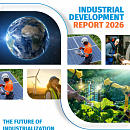
If the current model of industrialization persists, more than 3 billion people will remain below the poverty line by 2050, with 95% of the world’s poor concentrated in low- and middle-income countries, primarily in Africa, according to a new report by the United Nations Industrial Development Organization (UNIDO). At the same time, industry remains one of the main drivers of socio-economic transformation. The manufacturing sector accounts for 53% of global R&D spending, holds 60% of “green” patents, and each job in manufacturing generates more than two additional jobs in related sectors. Developing countries lag behind advanced economies across three critical dimensions: manufacturing intensity, technological productivity, and environmental efficiency. These imbalances are further exacerbated by global megatrends, including the energy transition, digitalization, the reconfiguration of global value chains, demographic shifts, and the transformation of food systems. As UNIDO experts note, Asia, Africa, Eastern and Central Europe, and Latin America possess significant industrial potential in areas such as agro-processing, pharmaceuticals, green energy, and digital technologies. Unlocking this potential requires addressing infrastructure, institutional, skills-related, and financial constraints.
Published
26 December 2025
Обновлен
26.12.2025
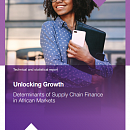
The United Nations Conference on Trade and Development (UNCTAD) has analyzed how supply chain finance can support small business development and expand trade in African countries. The report notes that despite a potential market size of more than USD 60 billion, only 7–25% of this potential is currently being utilized, as banks and financial institutions tend to focus primarily on global rather than regional value chains. Access to supply chain finance is determined less by company size or ownership structure than by firm-specific characteristics, including the quality of management, women’s participation in business, and the availability of a credit history. The highest demand for supply chain finance is observed in construction, retail trade, pharmaceuticals, and manufacturing. The report also highlights the role of digitalization and fintech solutions in facilitating business access to financial instruments. As key policy recommendations, UNCTAD proposes developing digital platforms for small and medium-sized enterprises, improving legal frameworks for managing accounts receivable, and strengthening the capacity of banks and companies to use supply chain finance instruments effectively.
Published
26 December 2025
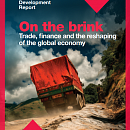
The United Nations Conference on Trade and Development (UNCTAD) released a new working paper on global economic developments. According to the organization, global growth is expected to slow from 2.9% in 2024 to 2.6% in 2025 and to remain at that level in 2026. Despite ongoing challenges, developing economies remain the main drivers of global growth, accounting for nearly 70% of the increase in global output. Economic momentum is constrained by declining investment (with the exception of certain technology sectors), rising costs of external financing and growing debt burdens, as well as volatility in global financial markets. Additional pressure stems from geopolitical risks and the fragmentation of global trade. The authors place particular emphasis on the interlinkages between climate change and financial and trade markets. According to UNCTAD, high vulnerability to climate-related disasters directly reduces economic growth: countries affected by extreme events incur substantial losses (G20 countries lost USD 525 billion between 2000 and 2019). In addition, climate-vulnerable countries pay more than USD 20 billion per year in higher borrowing costs. UNCTAD calls for increasing international climate finance and simplifying related mechanisms to support sustainable growth and resilience.
Published
26 December 2025
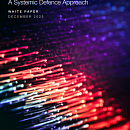
A report by the World Economic Forum highlights the rapid growth of digital fraud. In 2024, global losses exceeded USD 1 trillion, while AI-generated phishing emails achieved a 54% click-through rate, 350% higher than that of conventional phishing messages. Criminals are increasingly exploiting digital infrastructure: in 2024, 8.6 million unique malicious domain names were recorded (an 81% increase), with 87% of phishing activity linked to domains registered through a limited number of registrars. Voice and SMS phishing are also intensifying: the number of voice-based attacks rose by 442%, and in the United Kingdom operators blocked more than 1 billion malicious SMS messages. The report calls for a systemic approach combining prevention, protection, and mitigation measures, including tighter controls on bulk domain registrations and the deployment of security technologies by default. An example of effective action is the Global Signal Exchange, which increased the volume of shared signals from 40 million to 550 million in less than a year.
Published
26 December 2025
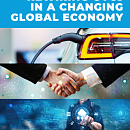
The WTO has released its annual report reviewing the state of global value chains (GVCs). The analysis shows that despite rising geopolitical and geo-economic tensions, GVCs are not collapsing but are being reconfigured under the influence of political factors, digitalization, and the green transition. In 2024, GVCs accounted for 46.3% of global trade, close to the peak levels recorded in 2022 (48%), alongside increased regionalization and the relocation of production by multinational companies. The report highlights a structural shift toward services—especially digital services—and a broader participation of economies with initially low levels of integration: the share of economies with high GVC integration declined fr om 76% in 2010 to 63.6% in 2025. The WTO emphasizes that participation in GVCs alone does not guarantee higher value added, particularly in Latin America and Africa, wh ere specialization in low-margin segments persists. In the electric vehicle sector, high concentration is observed: China produced 76.9% of global electric vehicles in 2023, while battery production accounted for 85% of lithium consumption and 70% of cobalt consumption, increasing supply-chain vulnerabilities. The WTO stresses the need to shift policy focus from trade volumes to improving “readiness” for GVC participation – through investment in digital infrastructure, logistics, green energy, financial instruments, and targeted trade agreements—to support sustainable and inclusive growth.
Published
26 December 2025
Sort setting:
Filters
Additional filters
